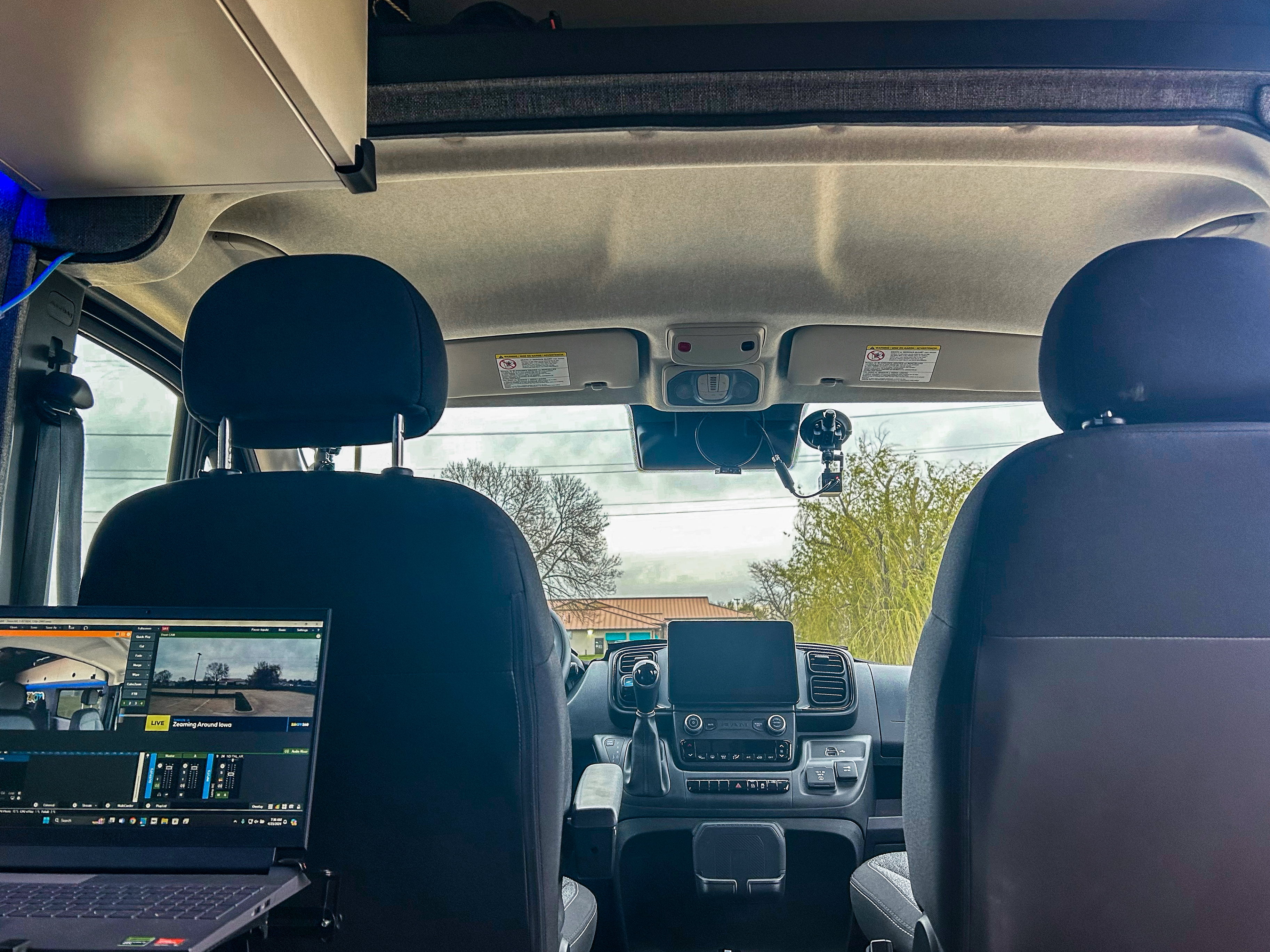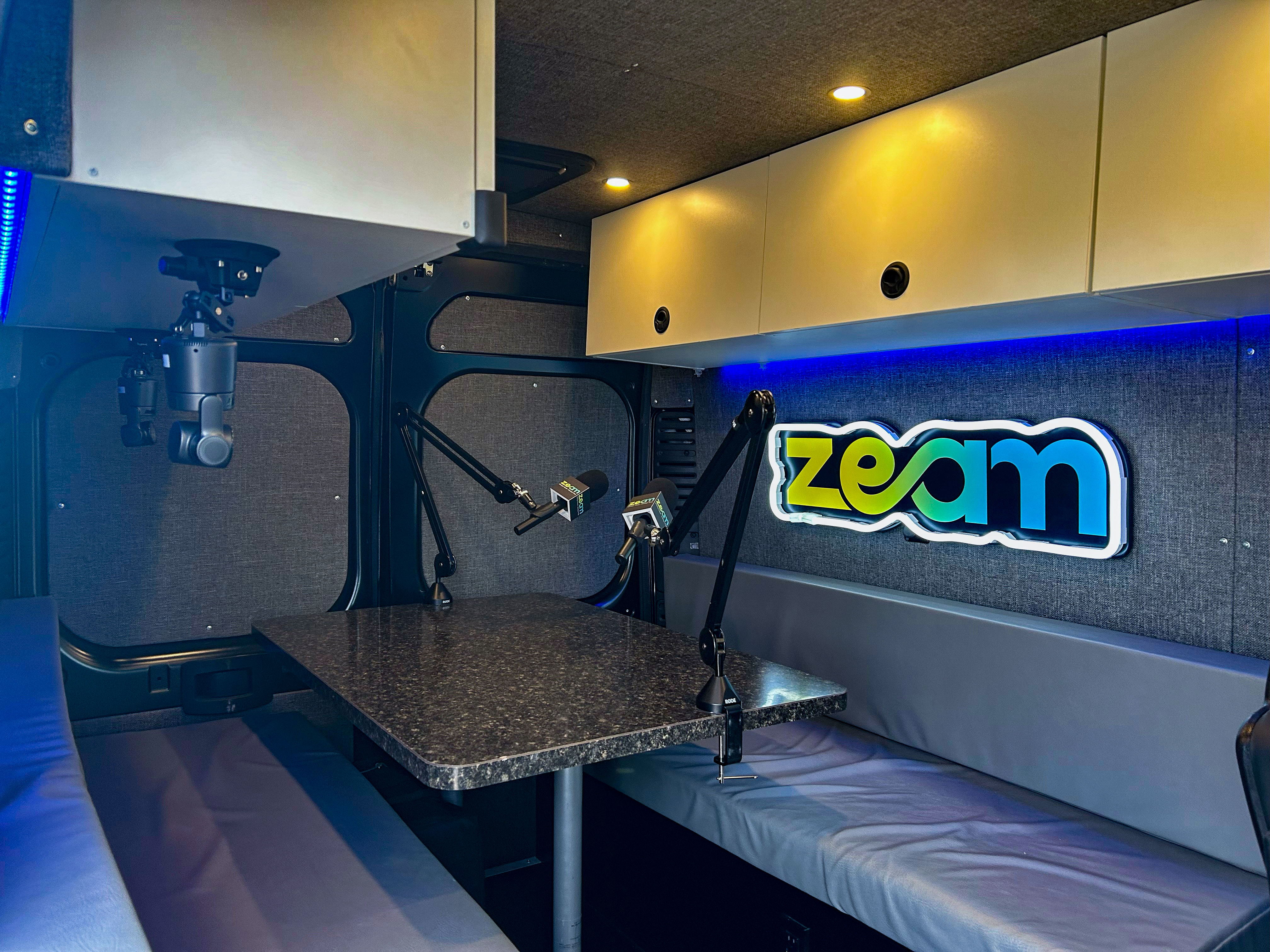
Since launching a major marketing branding campaign on Super Bowl Sunday this year, the local streaming service Zeam has spent the first half of 2024 working to spur the development of more hyperlocal content by deploying new technologies that aim to make it easier and more profitable for local broadcasters to offer new streaming content.
Those efforts include the launch of the Zeam360 mobile production studio, the construction of a new studio in New York City’s Times Square set to open this summer, the creation of a small branded content studio in Marion Ohio, and a partnership to launch “Fast Lane TV, by Ryan Philly” with hyperlocal content from racetracks around the country.
Taken together, this flurry of activity, makes Zeam a compelling case study in how newer technologies for production and advertising could make hyperlocal streaming more accessible and profitable for local stations.
“The idea is to innovate and lead by example and to show our broadcast partners everything that can be done in the whole space by getting their viewers more content,” explained Jack Perry, the founder and CEO of Zeam Media whose local OTT platform Zeam currently reaches audiences in over 165 DMS and features 227 over-the-air stations providing 274 total streams. Zeam is backed by Gray Television, CBS, News Press & Gazette, Hearst and Morgan Murphy.
The centerpiece of that effort to “innovate and lead by example” is the Zeam360 mobile studio. Zeam360 bowed with a barnstorming tour in early 2024, stopping at nearly 30 local broadcast stations en route to the Super Bowl as part of the company’s strategy of helping local broadcast stations learn about the possibilities of OTT while also creating compelling hyperlocal content for viewers.

The technology used in the van illustrates how the cost of production gear has both improved and plummeted in cost, making hyperlocal production an appealing opportunity for local broadcasters, Perry says. Excluding the cost of the van and customizing it, the gear for hyperlocal production can be acquired for under 15K.
Hyperlocal production has been “viewed as hard,” Perry admits. “But it’s really the 'unknown part’ that is hard. If you have the right technology, and the technology is getting simpler…we’re out there to show it makes a lot of sense.”
“It can be outfitted inexpensively,” he added, particularly at stations that have decommissioned trucks. “That’s the most expensive part and we’ve heard from a number of stations that we have these old decommissioned trucks. Maybe we ought to outfit it like Zeam 360.’”
The Zeam360 mobile production studio is built around “the exact same van that Amazon Prime uses, [the Dodge Ram] Promaster,” Perry said.
It is customized with four captain’s seats and a podcast table for a podcast studio in the back. It is equipped with solar power.
The setup has six or seven cameras, Perry said. The primary cameras are AIDA Imaging HD-NDI-CUBE cameras (https://aidaimaging.com/hd-ndi-cube/). It uses a vMix production system, which handles live video switching, video playback, audio mixing and graphics. (https://www.vmix.com/) For microphones, they are using the RODE Wireless GO II system. (https://rode.com/en/microphones/wireless/wirelessgoii)

Zeam360 is completely IP-based for video distribution. Internally, they use NDI which makes for simple plug and play for adding/removing cameras and other devices both inside and outside of the Zeam360.
They also utilize iPhones to shoot remotely and bring the video back to the Zeam360 via SRT. The output of the Zeam360 is an SRT stream directly into the Zeam MediaMogul cloud, with connectivity for the Zeam360 from Starlink.
Taken together, the audio, video and streaming tech (video switching, audio mixing, graphics, cameras, network equipment, etc.) used to equip the van is under $15K, the company said.
An early example of how the setup can help a local station bump up its local content production can be found at KVVU, the Gray Television owned Fox affiliate in Las Vegas. It was one of the nearly 30 stations visited by Zeam360 prior to its big Super Bowl Marketing campaign of regional Super Bowl ads featuring John Stamos.
Kristin Bernal, senior executive producer of news specials and entertainment, at the station said that “we worked with the Zeam team and Zeam360 when they were in Las Vegas for the Super Bowl. The idea was to take a look outside as they traveled around the Las Vegas strip and Allegiant Stadium. We incorporated them into our lifestyle show for the week and also took their live elements into our newscasts. We incorporate live looks and interviews into our shows daily, so content from Zeam 360 was a great, natural addition to our Super Bowl coverage. We promoted what the Zeam Van was and how viewers benefit from the technology. We used their livestream when live on air, which was made possible via their Starlink Internet service.”
“What is nice about Zeam360 is that we didn’t have to worry much about the technology behind it – the van comes equipped with everything we need to capture the content we want,” she explained. “All we needed to do was take what was produced from the van and drop it into our own programming as we saw fit…We thought Zeam 360 gave us another tool in the toolbox to cover a big moment in the community like the Super Bowl. I think people are interested in fresh, unique content that shows what is happening around them and Zeam360 provided us a different way to do that.”
Since then, Perry recalls traveling and live streaming with Zeam360 on Route 66 on the way to the 2024 NAB Show. “The Arizona Supreme Court had just overturned an abortion ruling and there was a protest as we were pulling into Flagstaff,” he said. “I grabbed a gimbal and an iPhone and linked the iPhone back to Zeam360 and streamed it live…I think the Zeam360 van can inspire more activities like that, whether it’s a protest or a little league game. We’re trying to show how simple it is to get your viewers something to watch.”
Such efforts are particularly notable given hype surrounding hyperlocal news in the 2000s and the subsequent financial difficulties that hyperlocal news sites faced in the 2010s, when a number of high profile operations like The Patch were either shut down or significantly scaled back.
Since then, however, hyperlocal news has seen something of a revival, with a revamped version of The Patch under new owners now turning a modest profit.
In addition to the lowered costs of production and streamlined workflows, Zeam is also betting that its economies of scale for digital and streaming advertising can make hyperlocal content a profitable idea for local stations that stream local content and news on Zeam.
“We have our own ad serving technology called AdSync,” Perry explained, “that is bolted onto the traffic systems at hundreds of mobile station websites…and all the station apps and websites that are part of our network. It is pulling all those available into a network of avails…The rebranding of the company [from Syncbak to Zeam Media in May 2024] was driven specifically by the nation of demonstrating to the advertising world that this is one bucket of ad avails with billions of avails.”
In addition to pooling all the avails so advertisers can easily target audiences, the Zeam platform also makes it easier for small producers to connect with advertisers. “Our ad technology today is offering over 6 billion impressions, up from zero only a few years ago,” Perry said. “Even if you are a little podcaster, you can benefit from joining that network of advertising avails.”
To build on those efforts, Zeam is constructing a studio in Times Square, which will both boost its content production and act as a billboard for the service in an area of New York City that sees some 55,000 people walk by each day. The studio is expected to go live this summer.
Zeam is also operating a branded content studio in Marion, Ohio. “It’s showing our broadcast partners that branded content is a big part of the future,” Perry said. “Micro audiences are not a bad thing if you’re not spending a lot to create the content and if it doesn’t cost you a lot to equip your studio.”
More recently, Zeam added new channels from Tegna and streams from stations owned by Hubbard Broadcasting, which is now offering hyperlocal news from KAAL-TV (Rochester, Minn.), WHEC-TV (Rochester, N.Y.), WDIO-TV (Duluth, Minn.), KOB-TV (Albuquerque, N.M.), KSTP-TV (Minneapolis, Minn.), and WNYT-TV (Albany, N.Y.) to viewers national via Zeam’s platform.
In June it also launched a partnership with Ryan Phinny that featured the creation of a dedicated Ryan Phinny channel on Zeam, called “Fast Lane TV, by Ryan Phinny,” and the production of local content using Zeam’s mobile production unit. The Zeam360 van will also be on-site at various Phinny races, capturing and livestreaming pre-and-post race content that will be featured on the channel.
Perry believes that these ongoing examples of low-cost hyperlocal programming will help overcome the reluctance of some station groups to stream their local news.
Nexstar, for example, has been vocal about the impact that streaming might have on its lucrative retransmission consent revenues and responded to those worries in 2023 by restricting the amount of local news content it is streaming.
Perry responds by saying there are ways to offer and create hyperlocal content that won’t hurt the value of local newscasts in retransmission negotiations.
“I say let's get your viewers something else to watch,” he said. “Let's cover your communities more deeply. We launched a UGC [user generated content] utility called Zeam Up to let viewers provide content to stations. If you are worried about retrans, produce other things. On Zeam you can build an out of market audience and you can start thinking about all the types of content that won’t…compete [with your feed] on the cable companies. That content won’t cause the cable company to say `we're not gonna pay returns anymore because you're putting your product out there.’ It’s a matter of giving them something else to watch.”







